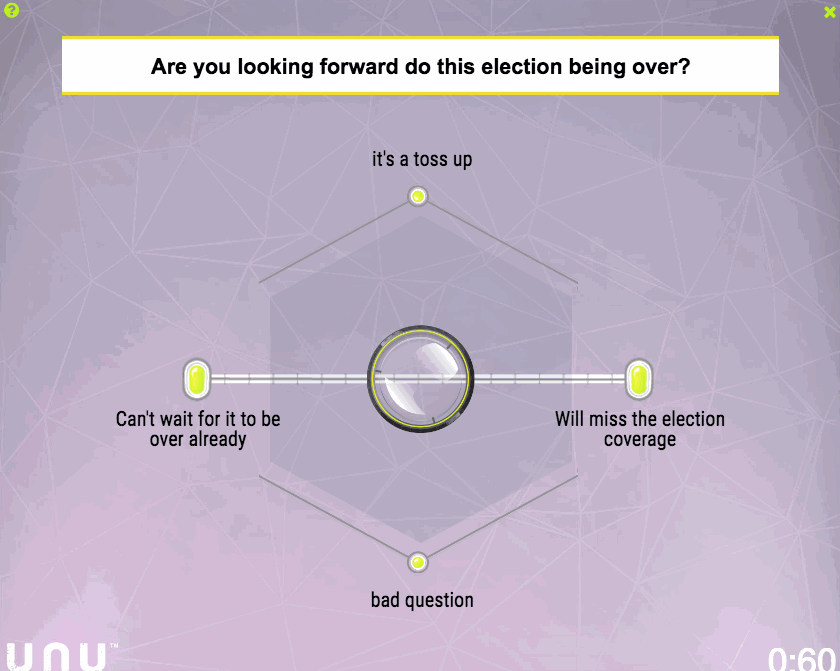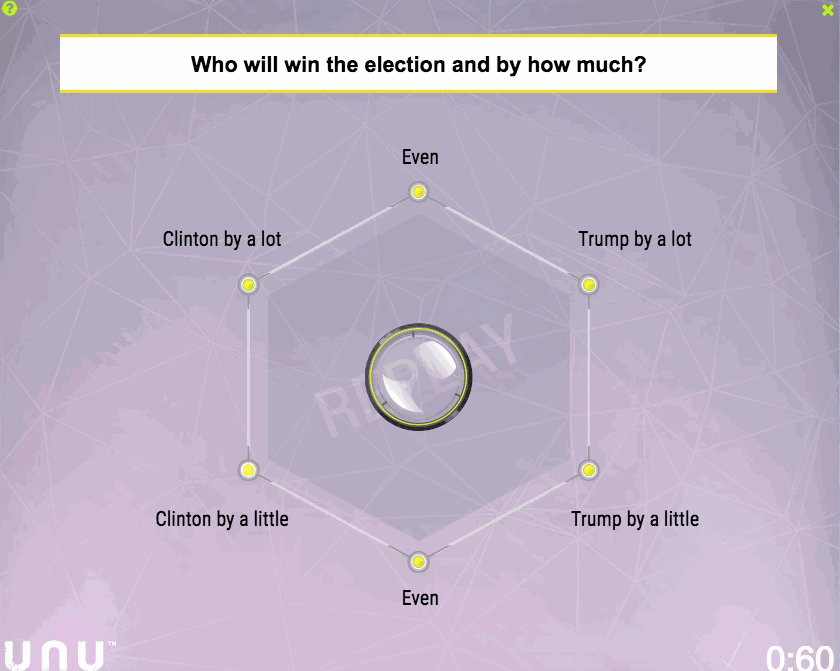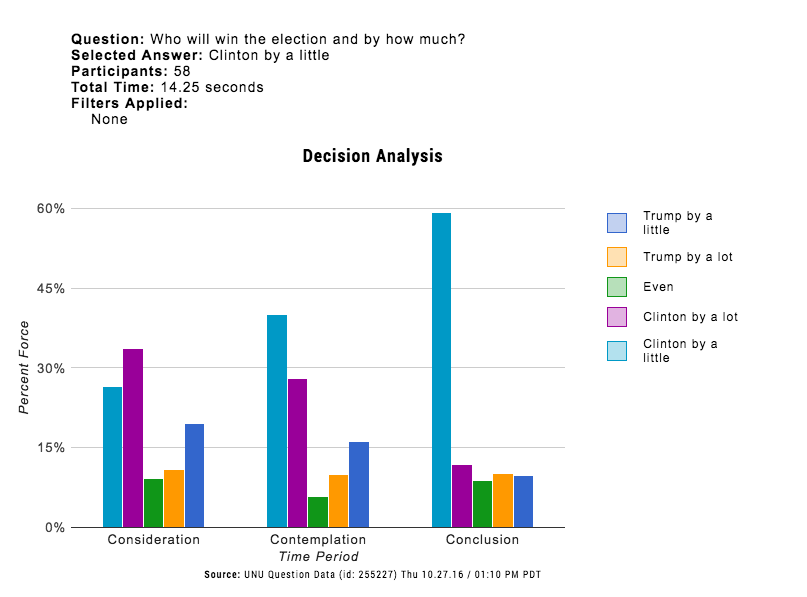Here’s a not so hot take: the US election cycle is way too long. No matter which side of the aisle you’re on, it’s easy to agree that the end of the 2016 Presidential campaign can’t come soon enough. In Australia, for example, Presidential campaigns are launched literally weeks before the election. In contrast, the GOP debates were held well over a year ago, and Clinton has been running for President for the better part of a decade.
On the other hand, election coverage of Trump has been so successful, ratings-wise, that many people believe that, win-or-lose, the GOP nominee might use it as a springboard to launch TrumpTV. And the Nielsen numbers show that when Clinton and Trump held their second debate, 84 million people tuned in, leaving Monday Night Football, the traditional ratings juggernaut, to settle for record lows. So, which is it? Is the American public truly clamoring for more election coverage, or are they ready to change the channel?
To find out, researchers at Unanimous A.I. formed an Artificial Swarm Intelligence composed of 56 voters from across the country. Using UNU, the Swarm Intelligence platform that allows group to think together, researchers were able ask this Swarm of voters to answer questions about the end of the 2016 election and find the answers that best represented the collective will of the group. In terms of the makeup of the group, the 56 voters were split as follows: 36%Democrats, 34%Republicans, and 30% Independents. This closely mirrors the Pew 2015 National affiliation, albeit with a slight overrepresentation of GOP voters and slight underrepresentation of Independents.
First, the Unanimous A.I. researchers wanted to know, was the Swarm looking forward to the end of the election?

As you can see, Republicans, Democrats and Independents found consensus in just 12 seconds. The result is clear: all three groups are overwhelmingly ready for the 2016 Presidential campaign to be over. When was the last time those three groups agreed on anything so quickly? And it might not just be the voters who feel that way. In fact, as the campaigns draw to a close, there is evidence that even the candidates themselves are starting to look beyond November.
Of course it’s impossible to run a late-October political study without asking the Swarm who it believes will win the election. The replay below shows the Swarm finding consensus on this potentially divisive topic.

It’s important to note that the Swarm Intelligence here is predicting who will win the election, not registering who each participant wants to see win. In other words, this response is very different from a vote in that involves collaboration and feedback amongst the group. You can see a real-time negotiation taking place, each magnet representing a potential voter reevaluating her position as the group moves toward an acceptable consensus.
The chart below shows the evolution of the decision. Initially, the Swarm is much more evenly split, with “Trump by a Little” receiving almost as much support as “Clinton by a little” and “Clinton by a lot” the clear frontrunner. However, as the decisions evolves, while the “Trump by a lot” faction remains constant, the “Trump by a little” and “Clinton by a lot” factions converge on a middle ground they can both agree on: “Clinton by a little.” And then, as you can see, that choice builds a very strong base of support.

While there are many approaches to gaining electoral insights, only Swarm Intelligence reveals how a group truly thinks together.
Do you have any questions you want to ask the Swarm?
